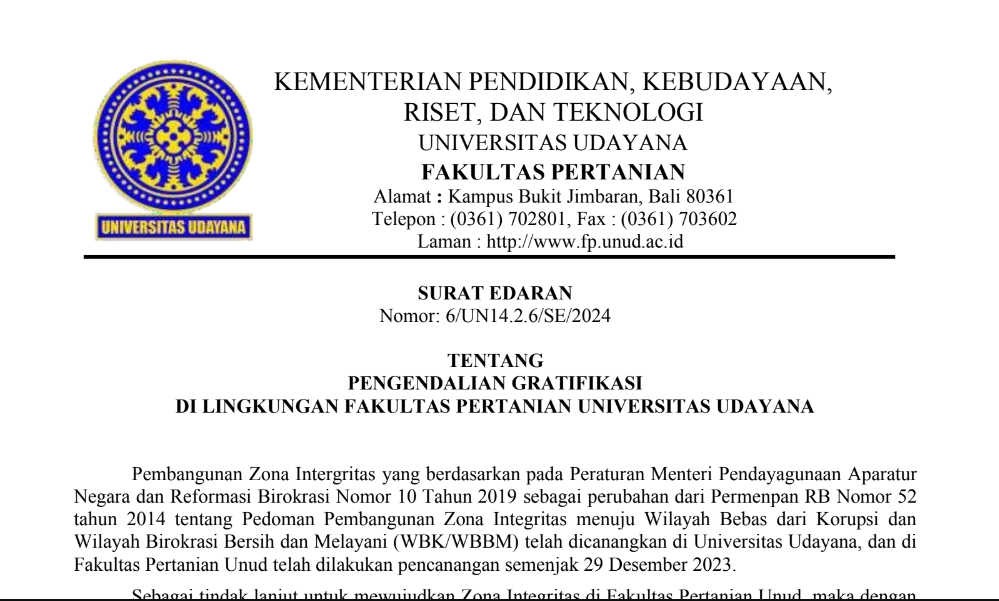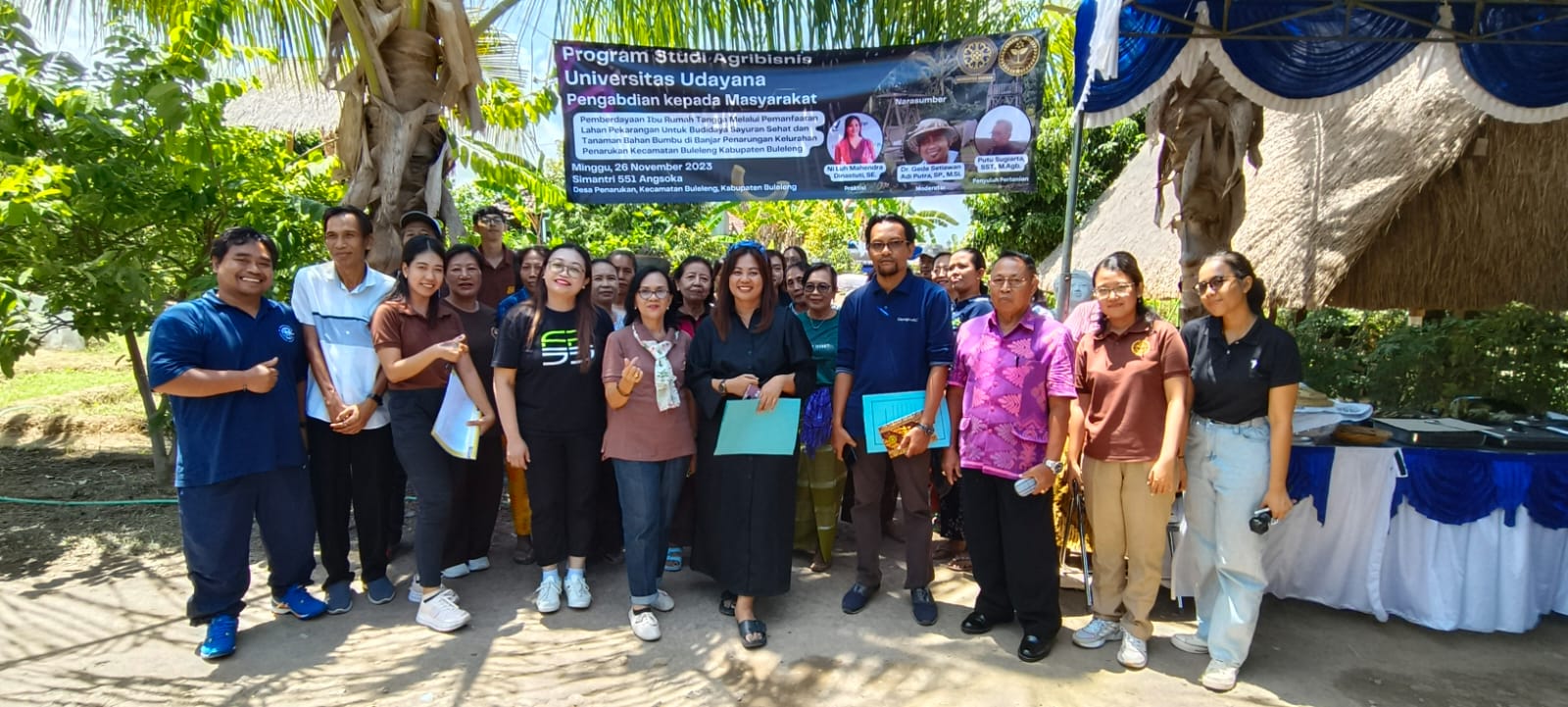Teaching and Learning Methods
Teaching and Learning Approach
The philosophy of the BoA is in line with the philosophy of Udayana University, namely Taki-taking Sewaka Guna Widya, which means that people who study knowledge must pursue knowledge and virtue. The philosophy of Udayana University is also implemented in the BoA education standards, especially in the graduate competency standards (ELO), which not only cover the realm of knowledge and skills but also the realm of attitude. This attitude competency reflects the attitude of a graduate that is reflected in the ELO 1 and ELO 2 formulations. Each course is required to accommodate three ELO formulations, which cover attitudes, knowledge, and skill competencies. Besides being socialized to lecturers and students, educational philosophy is also communicated to alumni and the community through ceremonial graduation activities, alumni meetings, ACF (Agribusiness Cadres Forming), and community service.
The learning process in the BoA uses the SCL (student-centered learning) approach by applying several learning methods, including the case method, team-based projects, problem-based learning, project-based learning, etc. Each course in this study program is 30% case method or project-based learning and 70% theory.
Each class is divided into several discussion groups (SGD), and each discussion group is given independent and structured assignments. Lecturers act as facilitators by presenting introductory lectures for a small part of the time available, and then more time is provided for student learning activities. Several courses that apply the case method learning system and project-based learning also use the Online Academic Service for Elearning (OASE) as a learning management system to carry out virtual asynchronous learning, for example, the Postharvest and Agroindustry Courses.
Each course has a certain learning load; for example, a course with a learning load of 3 credits has a composition of 2:1 (2 credits of theory and 1 credit of practicum). For this course, the SCL process includes 2 x 50 minutes of introductory lectures and discussion in class, 2 x 60 minutes of independent assignments, and 2 x 60 minutes of structured assignments from the lecturer. Furthermore, 1 practicum credit of 170 minutes per week per semester. A student not only takes advantage of study time in class but also provides more time for independent study and doing structured assignments outside of class to increase reasoning and critical thinking. By giving structured assignments by the lecturer on certain topics to each group through the preparation of group power points, it will encourage discussion and cooperative and collaborative learning.
The BoA summarizes new ideas, creative thinking, innovation, and an entrepreneurial mindset adopted by students through the Student Creativity Program (PKM), which is held regularly every year. There are five types of PKM fields offered to students: PKM-P (research), PKM-K (entrepreneurship), PKM-KC (creative initiative), PKM-T (technology), and PKM-M (community service). PKM-K is the field of PKM with the greatest interest in the BoA. PKM activities will produce proposals that will be brought to the faculty, university, and national levels, with proof of award for student activities.
The TPPMP is in charge of implementing the internal quality assurance system cycle at the study program level. The implementation of the quality assurance system includes planning, implementation, evaluation, controlling, and improvement. At the planning stage, TPPMP prepares the SPMI documents (kebijakan, manual, standard, and form) academic guidelines, curriculum, and learning evaluation monitoring reports. The TPPMP conducts evaluations, facilitates internal quality audits, and facilitates evaluations from external parties, such as BAN-PT. Every semester, the TPPMP examines each learning activity for later evaluation. The evaluation results are followed up with corrective actions as a follow-up to the evaluation results.



FACULTY OF AGRICULTURE